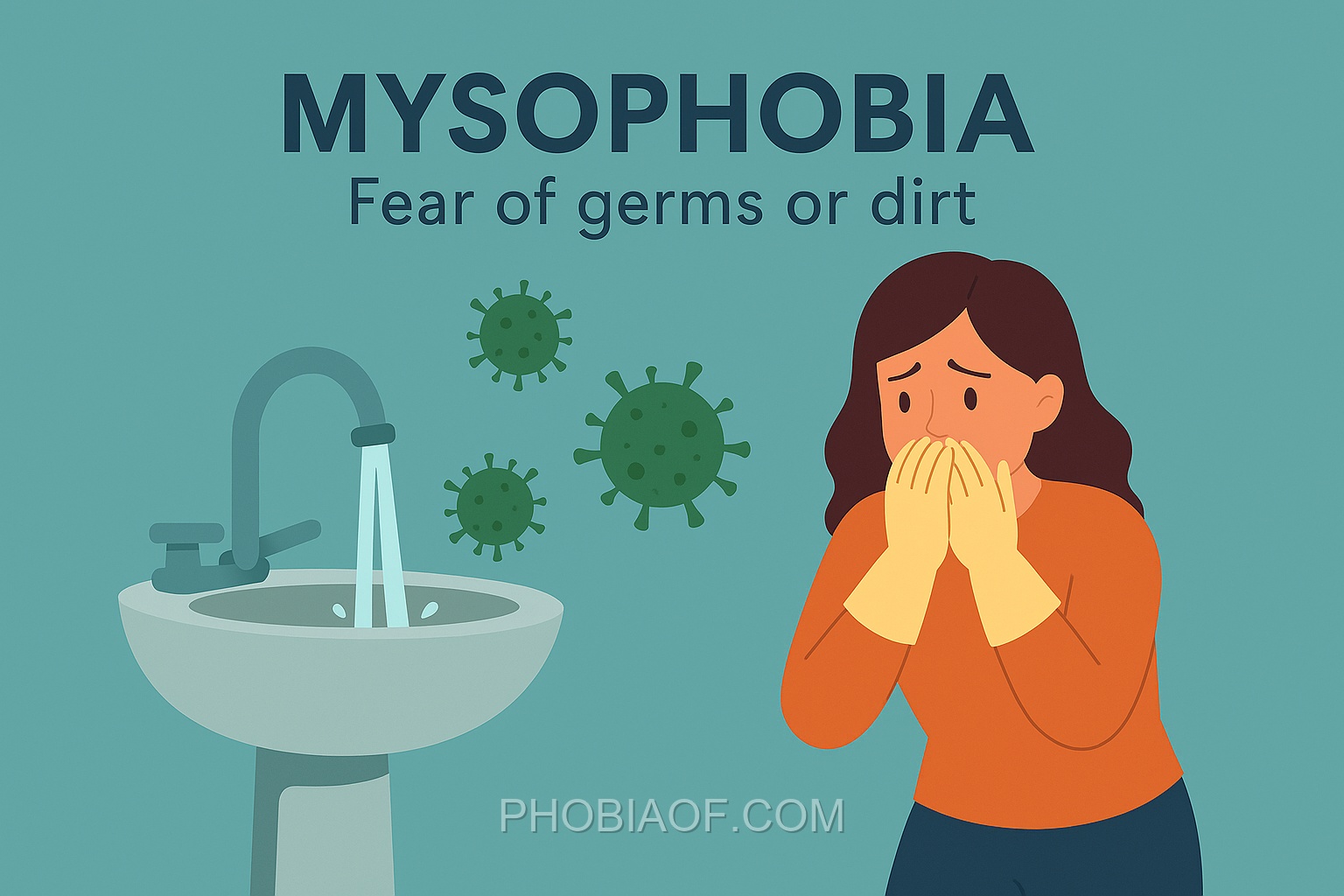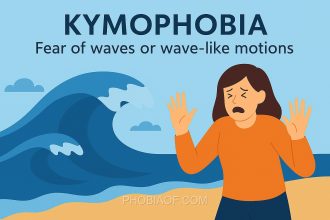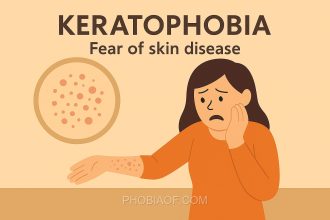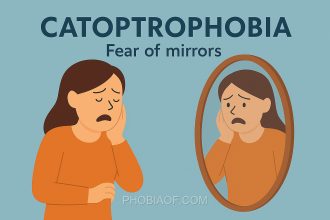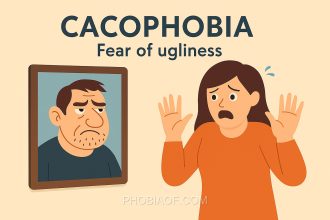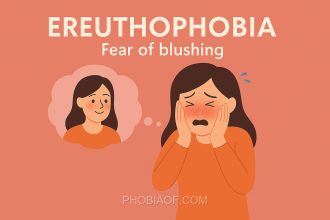Have you ever felt an overwhelming urge to wash your hands multiple times after touching a doorknob, or hesitated to shake someone’s hand out of fear of germs? If so, you’re not alone. These feelings might be linked to mysophobia, a condition more commonly known as the fear of germs or dirt.
Mysophobia is derived from the Greek words “mysos,” meaning dirt, and “phobos,” meaning fear. In everyday language, it refers to an intense and often irrational fear of germs, dirt, or contamination. This phobia can significantly impact a person’s daily life, leading to excessive cleaning, avoidance of certain places or activities, and heightened anxiety in situations perceived as unclean or risky.
Generally, people with mysophobia might experience:
- Frequent handwashing or use of hand sanitizers.
- Avoidance of public spaces or social interactions.
- Persistent worry about cleanliness and hygiene.
- Emotional distress or anxiety when confronted with dirt or germs.
Understanding mysophobia is the first step toward managing it. If you or someone you know struggles with this fear, it’s important to approach the situation with compassion and seek guidance from mental health professionals.
Causes of Mysophobia
Mysophobia, often known as the fear of germs, is a condition that can significantly impact an individual’s daily life. Understanding the potential causes of this phobia can help in addressing and managing it effectively. Below are some common reasons why someone might develop mysophobia.
- Genetic Predisposition:
Research suggests that genetics may play a role in the development of phobias, including mysophobia. If a family member has a history of anxiety disorders or specific phobias, there is a higher likelihood that other family members might develop similar conditions.
- Traumatic Experiences:
Experiencing a traumatic event, such as a severe illness or infection, can trigger a fear of germs. Such events may lead to an increased awareness and anxiety about cleanliness and contamination.
- Learned Behavior from Others:
Observing others, particularly parents or close family members who exhibit germophobic behaviors, can lead to the development of mysophobia. Children often mimic the behaviors and attitudes of adults around them.
- Psychological and Environmental Factors:
Stressful environments or a heightened focus on hygiene, such as during a global pandemic, can exacerbate fears related to germs. Media coverage and societal emphasis on cleanliness can also influence one’s perception of germs and contamination.
Some interesting theories propose that mysophobia might be a manifestation of a more generalized anxiety disorder. Others suggest that it could be linked to obsessive-compulsive tendencies, where the fear of germs becomes a compulsive focus.
Addressing mysophobia often requires a multifaceted approach, including therapy and support from mental health professionals, to help individuals cope with and overcome their fears.
Symptoms of Mysophobia
Mysophobia, often referred to as the fear of germs, can be an overwhelming and debilitating condition. Individuals with this phobia experience intense fear or anxiety related to germs and contamination. Recognizing the symptoms is crucial for understanding and managing this condition. Below are some common symptoms associated with mysophobia:
Physical Symptoms:
- Panic attacks, which may include shortness of breath and chest pain.
- Excessive sweating, especially in situations perceived as unclean.
- Rapid heartbeat or palpitations when confronted with potential contamination.
- Shaking or trembling when exposed to feared situations.
Emotional and Behavioral Symptoms:
- Avoidance of places or situations where germs might be present, such as public restrooms or crowded areas.
- Overwhelming dread or distress when thinking about germs or contamination.
- Excessive cleaning or handwashing to alleviate fear of contamination.
- Obsessive thinking about cleanliness and health, often leading to significant distress.
When severe, these symptoms can significantly interfere with daily life, impacting work, social interactions, and overall well-being.
Treatment for Fear of Germs or Dirt
Overcoming a fear of germs or dirt, known as Mysophobia, is entirely possible with the right approach and support. It’s important to remember that you are not alone, and many people have successfully managed and treated this phobia. Let’s explore some effective treatment options and coping strategies to help you on your journey to overcoming this fear.
Proven Therapies
- Exposure Therapy: This therapy involves gradually facing and confronting the fear of germs or dirt in a controlled and safe environment. By slowly increasing exposure to the feared object or situation, individuals can reduce their anxiety levels over time.
- Cognitive-Behavioral Therapy (CBT): CBT is a highly effective treatment that helps individuals identify and change negative thought patterns related to their fear. By restructuring these thoughts, individuals can reduce their fear response and develop healthier coping mechanisms.
- Counseling: Speaking with a trained counselor or therapist can provide emotional support and practical strategies to manage Mysophobia. Counseling can help you explore underlying causes of the phobia and work through any associated emotional challenges.
Self-Help Coping Techniques
- Relaxation Exercises: Techniques such as deep breathing, progressive muscle relaxation, and visualization can help reduce anxiety and promote a sense of calm.
- Meditation: Practicing mindfulness meditation can increase awareness of your thoughts and feelings, helping you to manage anxiety and reduce reactions to triggers.
- Support Groups: Joining a support group can connect you with others who understand what you’re going through. Sharing experiences and coping strategies can be empowering and provide a sense of community.
Medication
In some severe cases, medication such as anti-anxiety medications may be prescribed to help manage symptoms. However, it’s important to focus on therapy and coping skills as the primary treatment approach. Medication should be considered in consultation with a healthcare professional.
If Mysophobia is interfering with your daily life, it’s crucial to seek professional help. A mental health professional can guide you through the most appropriate treatment plan for your situation.
Remember, overcoming Mysophobia is a journey, and taking that first step to seek help is a significant and positive move towards a healthier, more fulfilling life. You have the strength and resources to overcome this fear, and support is available every step of the way.
Conclusion
Understanding mysophobia, or the fear of germs and dirt, is the first step toward managing and overcoming it. By recognizing the underlying causes and identifying the symptoms, individuals can become more empowered to address this phobia effectively. Awareness and education about mysophobia can demystify the fear and provide a clearer path to managing it.
It’s important to remember that many people have successfully managed or even overcome their phobias with time, patience, and the right support. If mysophobia is impacting your daily life, consider reaching out for professional help. Therapy and medical advice can offer valuable strategies and support to help you cope and regain control.
Embrace the journey toward overcoming mysophobia with optimism and persistence. You are not alone in this, and with the proper care and resources, a fulfilling and fearless life is within reach. Take that first step and consult a therapist or doctor today if you need support. Remember, every small step forward is a victory worth celebrating.
